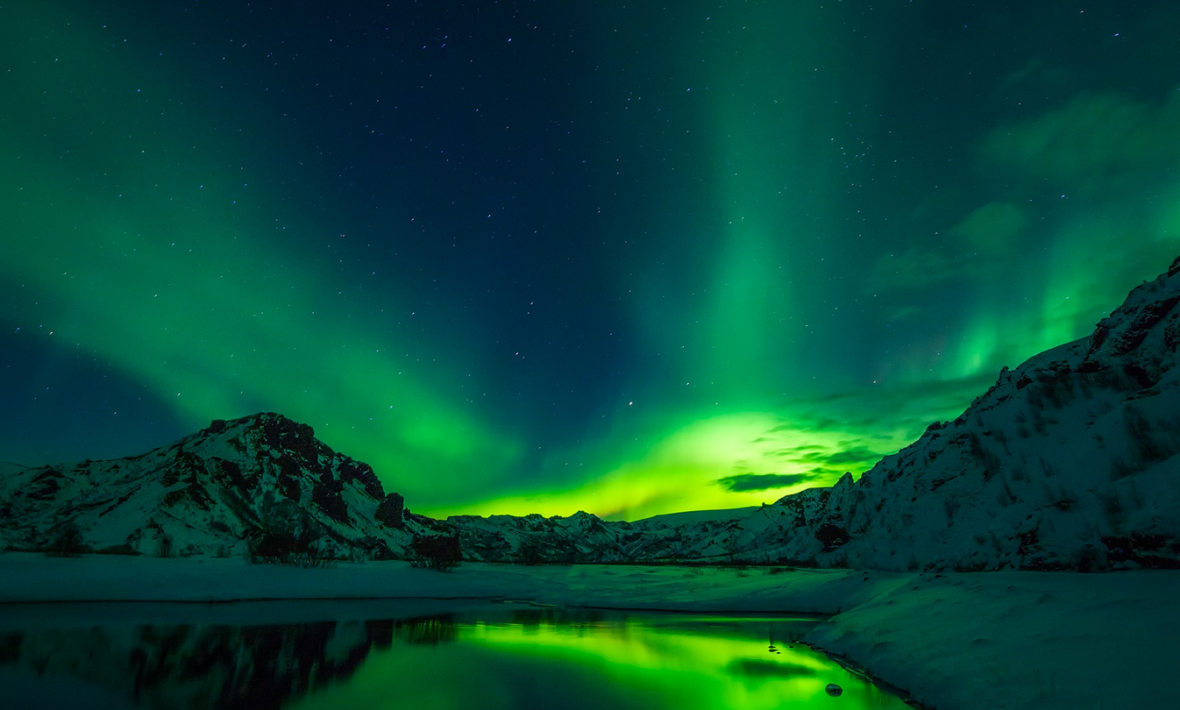
There are countless bucket list worthy experiences across the globe, seeing the sunrise at the Taj Mahal, hiking Machu Picchu and driving Route 66 in the States, all included. But the one experience that tops most people’s lists time and time again, is gazing upon the celestial starlit display that is the Northern Lights (AKA Aurora Borealis).
If this is you, here’s how to make those dreams a reality…
Where Can I See Them?
Norway: Svalbard in Norway is almost as north as you can go and one of the most successful spots for Aurora watching.
Iceland: As a country, Iceland is prime Northern Lights watching territory as they’re visible here for longer. Most people make Reykjavik their base and venture out to see them from there.
Scottish Highlands: The further north you go in Scotland the better, but the Cairngorms National Park is a hot spot.
Finland: Head to Lapland, Finalnd’s most northern region and if you’re feeling extra luxe, you can even rent a glass igloo to watch the lights from the comfort of a fluffy blanket encased bed.
Republic of Ireland: You’ll get a different perspective of the lights in Ireland as they’ll be in front of you rather than above sometimes. Malin Head is a good bet to spot them from.
Sweden: Abisko or the Swedish Lapland are all prime Aurora spotting destinations. Like Finland, you’ll have to brave some arctic tundra for the best views.
Northern Canada: British Columbia is one of the best places to see from, but luckily most of Canada is under the ‘Aurora Oval’ and sightings are likely with the right conditions.
When Can I See Them?
The Northern Lights are notoriously fickle and seeing them in all their glory depends on a number of factors, like solar activity and weather conditions (clouds stop even the most spectacular of displays). The best time to see the Aurora Borealis is in the deep winter months when the skies are darker than normal. January to March are the most likely, but also the coldest. September and October are a bit warmer and also provide good viewing opportunities.
Avoid April to August, it’s summer and the sun rarely sets enough for the sky to go dark, and November and December, because the incoming winter brings snowy conditions and harsh weather that blocks the sky.
ALSO READ: THIS PARAGLIDER FLOATING AMIDST THE NORTHERN LIGHTS IN BEYOND BEAUTIFUL
What Can I Expect?
The first thing to know is that the Northern Lights are VERY unpredictable. Plenty of things can affect their visibility and sometimes they just won’t come out to play. The number one tip is to be patient. It could be a long drive to get away from any artificial light so you can see the Aurora at its best, then prepare for a lot of waiting around (in a vehicle so you don’t freeze obviously) until/if they pop up.
If time permits, clear your schedule so you can go Aurora hunting a few nights in a row. A lot of tour companies will take you out every night for a week until you see them. Of course this may not be suitable given time constraints, but this is where patience comes in handy if you don’t strike gold the first night.
Also expect some super late nights, as the Aurora doesn’t know 3:00am is bedtime, and can appear anytime between sundown (4:00pm in the Northern countries) and sunrise (6:00am). The optimum time is between 9:30pm and 1:00am.
The lights appear in different formations too, from columns to hazy looking skies. The colours will vary too; from yellow and green, right through to aqua and purple, depending on what gases are in the fiery composition.
What Should I Bring?
Preparation is everything! Even in the warmer autumn or spring months it’s still going to be very cold and we advise you to wear ALL the warm clothing. Layers are best, including thermal underwear, warm headwear, thick gloves, two jackets and good snow boots.
Another good item to bring along is a chair. You’ll get a sore neck from staring up all the time, and you’ll thank us the next morning if you had a chair to rest your neck on. You can always bring a thick picnic blanket and lie down to watch them, but just make sure you don’t get too cold!
Pack some water, snacks and ideally hot drinks if your guide allows. Enjoying a hot chocolate (or even better, a hot toddy) under the lights is a memory you won’t soon forget.
And lastly, don’t forget your camera! If you’re an avid photographer and want the best shots possible, a tripod and DSLR camera are a must. But if you’ve just got your normal camera (or iPhone even), try and rest it against something steady (like the car) and do a time-lapse or slow-mo for a bit of fun. Post-trip you can always edit the colours too to make them really pop.
RELATED: TRUST ME, NOTHING CAN EVER PREPARE YOU FOR THE AURORA BOREALIS